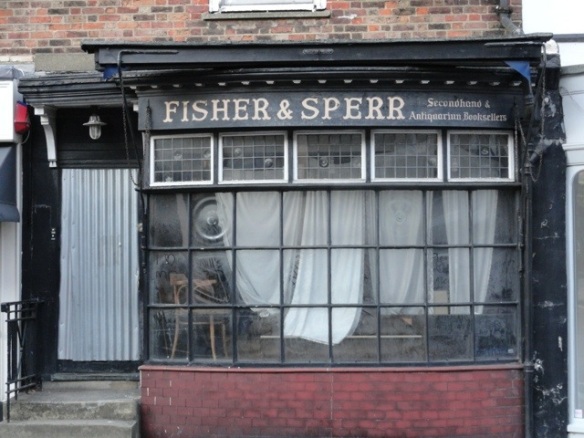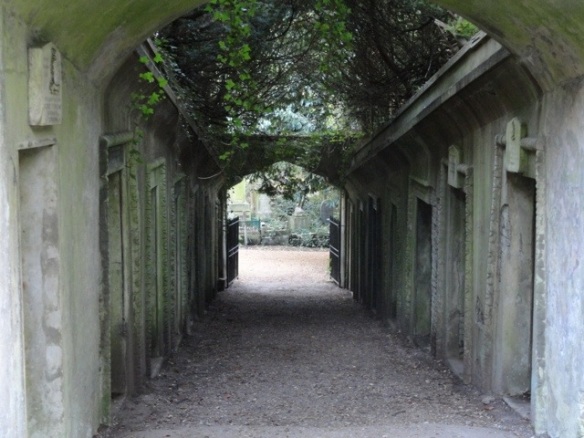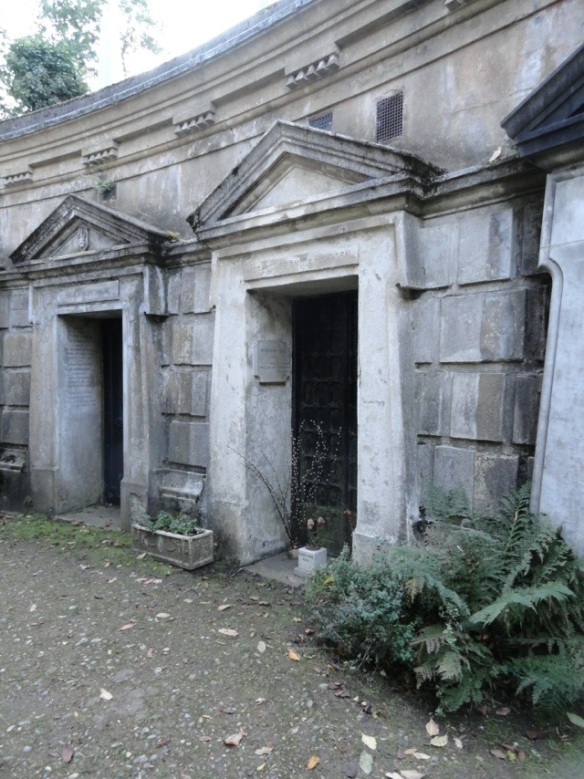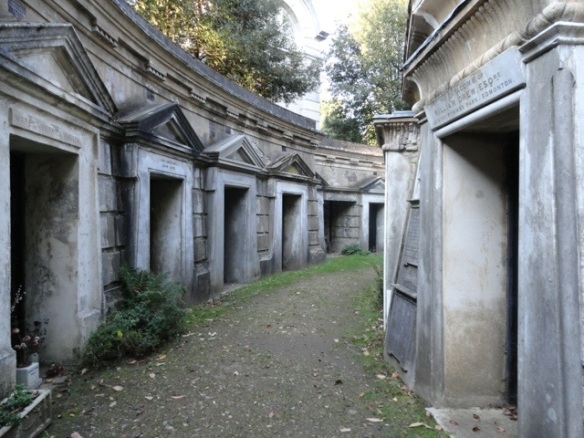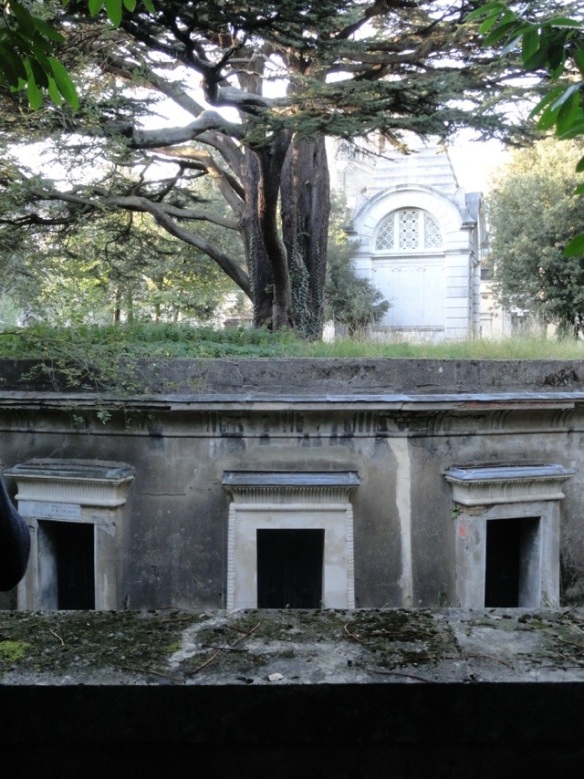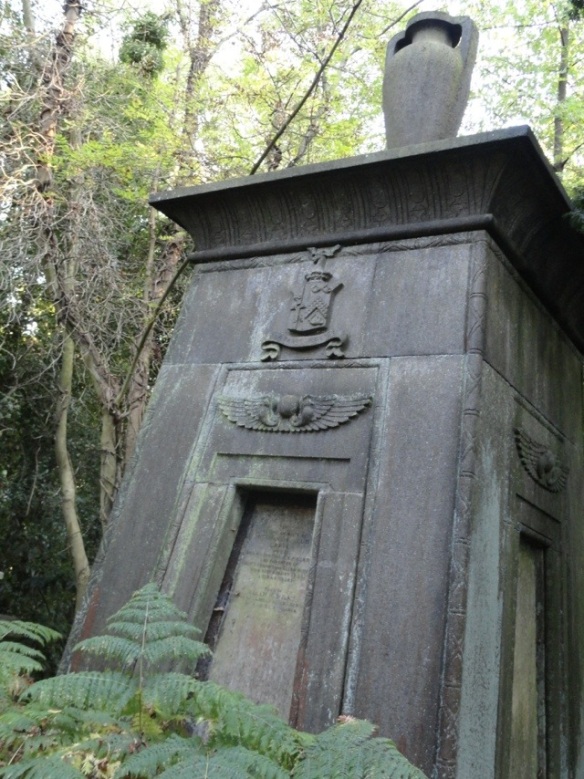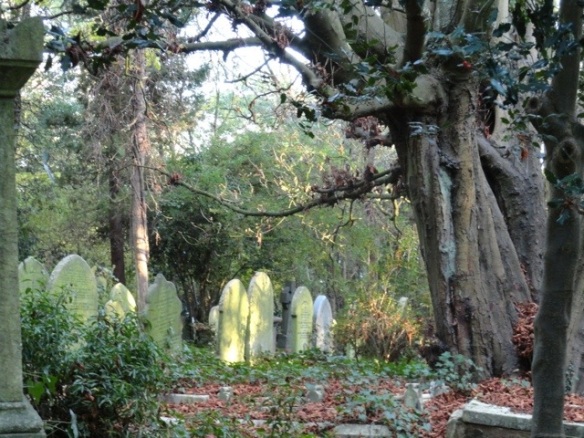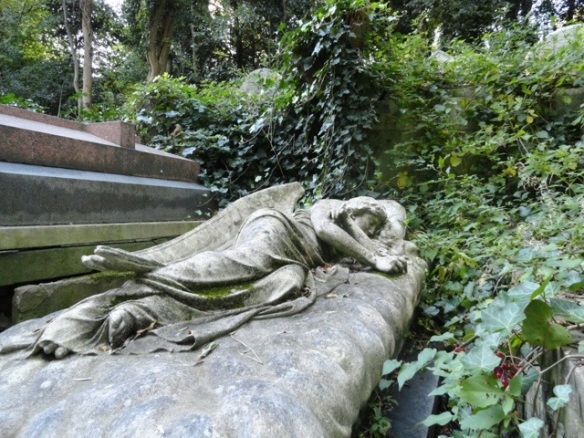Friday 21st October
High gate east and west, and the grim reaper tour
We tubed up the northern line again to return to Highgate and the East Cemetery that we missed yesterday. We bought some sweet pastries at a bakery cafe, and I paid more attention to the strange and wonderful buildings in the village.
We walked down from the village via the broad leafy road again, but detoured through the edge of parkland that sits on the side of the road across from the twin properties of Highgate. The tour began momentarily after we arrived, and I had scant time to marvel at the Anglican chapel and entranceway to the lauded East Cemetery. Highgate cemetery is one of the famous Victorian Seven or some such, a collection of seven cemeteries drafted when London city churchyards could no longer fit any more eternal residents. Highgate straddles the summit of one of the highest points in the city, and even in death, people will pay for a room with a view, so Highgate became the most desirable resting place of Victorian London’s well-to-do.
I marveled to learn that my appreciation of cemeteries and joy of spending time in them would have been common in the Victorian era; large parties of ladies and gents would often go to promenade at Highgate, and stand on the balcony of the old mansion to get a view of the tombs along the Egyptian avenue. So far the East cemetery was fitting in perfectly with my two favorite fictional cemeteries; the unnamed location of Gaiman’s The Graveyard Book and Fable II’s Bowestone Cemetery, which I’m now sure were based on Highgate. Walking through the vine-covered pillars at the entrance to the Egyptian avenue would have been impressive even without having read The Graveyard Book, but the twin literary experience heightened and deepened it; I was walking through the historic avenue itself, a beautiful living relic of Victorian style and sensibility, but at the same time I was walking through the fictional avenue, beside the character of Nobody Owens and sharing in all that that place meant to him. I even saw a great big apple tree, and there is indeed a wide sloping corner of unconsecrated ground.
I listened attentively to the guide, and as soon as he finished a story I’d dash off like a Gormenghastian pixie mad thing and take a bazillion photos. I got progressively more and more enrapt in this until Daniel had to call me to catch up with the swiftly traveling group and the dismissive glance of our stern young tour guide told me that I was in Very Big Trouble. I spent the rest of the tour with my proverbial tail between my legs and kept with the group. We were told stories of lion-tamers and world-famous wrestlers, alas for a historian I’ve no head for names or dates. We passed huge inverted black pyramids and obelisks following the Victorian interest in Egyptian art, and i think even heiroglyphics. We saw many more examples of the heavy Victorian symbolism that we’d begun to notice in the West side yesterday, our guide jumping into an excellent explanation or anecdote often just as I noticed a particular trend or stand-out example. The rawness and faithfullness of the symbolism was surprising and arresting; we saw upturned burning torches, extinguished, a lot of skulls, hourglasses with wings (“time flies”) and sleeping angels.
The tour was over far too quickly, ever minute having been a thrill and joy to me, and as I suspected we were not allowed to dally inside, so no more poetic ponderings, or photographs, for me. Time flies indeed.
Grim Reapers of London Tour
We took the northern line back into London central, alighting at bank and wandering through fantastically named streets such as Cheapside that look like the set of Mary Poppins. We walked alongside the themes, smelling the hot caremelised peanuts and hearing vendors hawk their wares, until we were at tower hill, the announced location of the Grim Reapers of London Tour. Wooooh. Scary voice. Claws.
Our guide arrived, inconspicuously dressed in dark casual clothing, with somewhat straggly black hair and large furtive eyes, looking quite a lot like James Nesbit’s Jeckell/Hyde. He took our money, haggled with a tourist over the fact the price had been raised, bought a bottle of water, and then took us to a dark empty patch of tower hill garden to begin the tour. Just after the introductions, a guard strode toward us and kicked us out of the park (“closing time now”) and so we were told about the hill’s history as a medieval beheading pavilion from across the road. I couldn’t tell whether our guide had done the tour too many times to care, or not enough times, but his eyes kept darting and the stories were more dramatic then interesting at first. This could be, though, because I’d heard them all before at the Tower of London. We walked along every fifteen minutes to a different location and a different story, all the while noticing other tour guides aloft, lit by streelights, surrounded by the upturned faces of a crowd of scared or laughing tourists (and secretly thinking e should have gone with one of them instead).
Soon, though, the stories were new and unknown, about Victorian London rather than medieval London, and our guides owl-like eyes became haunting and his stories less dramatic and more sterile facts, suggestive possibilities. The picture that he painted of life on the poverty line in Victorian London was horrifyingly grim in itself. We followed the scenes of Ripper murders like a weird game of connect the dots, crossing over a plague pit that had been excavated and lit under glass. The guide explained the dozens of plagues that decimated the London population over the centuries and finished with an appalling joke about how on a hot day the smell there was terrible, which had all the girls -myself included- exclaiming “yeugh!” and covering our mouths. We toured one f the few surviving Victorian alleyways, now servicing restaurants in the inner east, and were told that for the survival of so few historical laneways we could thank the twentieth century’s most influential city architect; Hitler (the blitz destroyed a huge amount of London among so many cities). Another grim reaper of London, then.
The tour travelled on through Shoreditch (mighty boosh!) and ended in whitechapel, which turns out to be named understatedly for a HUGE white stone church with roman pillared verandah and all. The guide pointed out the boarding house, above the extant Ten Bells pub across the street, and quite convinced me of his suspicions about the identity of Jack, which I have now totally forgotten. All in all, it was a great gloomy, spooky day in wintery London town.

